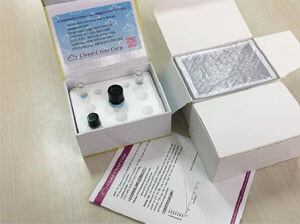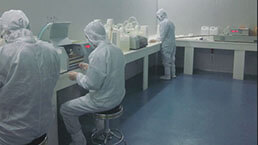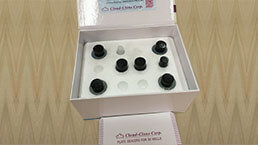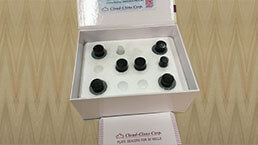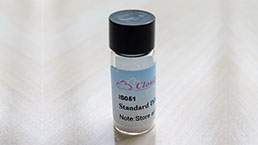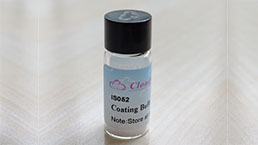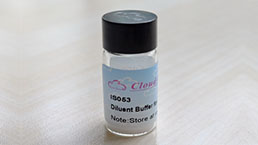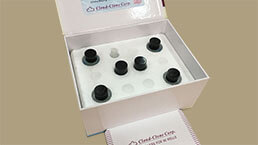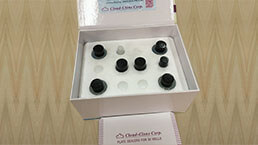ELISA Kit DIY Materials for Syndecan 1 (SDC1) 

CD138; SDC; SYND1; Syndecan Proteoglycan 1
- UOM
- FOB US$ 1,197.00 US$ 1,995.00 US$ 3,591.00 US$ 6,983.00 US$ 11,970.00
- Quantity
Overview
Properties
- Product No.KSB966Hu01
- Organism SpeciesHomo sapiens (Human) Same name, Different species.
- ApplicationsMain materials for "Do It (ELISA Kit) Yourself".
Research use only - DownloadInstruction Manual
- CategoryTumor immunityInfection immunityImmunodeficiency
- Reagent Contents Capture Antibody, Detection Antibody, Standard, Streptavidin-HRP, TMB Substrate, 96-well Plate
- Detectable Sampleserum, plasma, tissue homogenates, cell lysates, cell culture supernates and other biological fluids
- Applicable PrincipleDouble-antibody Sandwich ELISA for Antigen Detection
- Detectable Range1.56-100ng/mL
- Applicable Sensitivity0.63ng/mL
Sign into your account
Share a new citation as an author
Upload your experimental result
Review

Contact us
Please fill in the blank.
Specifity
The Abs in the kit have high sensitivity and excellent specificity for detection of Syndecan 1 (SDC1). No significant cross-reactivity or interference between Syndecan 1 (SDC1) and analogues was observed.
Usage
1. Coat the plates with 100μL per well of working solution of Capture Antibody.incubate overnight at 4°C or incubate at 37°C for 2 hours.
2. Aspirate and wash 1 time.
3. Block the plates with 200 μL per well of working solution of Blocking Buffer. Incubate at 37°C for 1.5 hours.
4. Aspirate and wash 1 time. The plates are now ready for sample detection, the protocol is the same as regular ELISA.
Storage
Antibodies, Standard and Streptavidin-HRP should be stored at -20°C. TMB should be stored at 4°C. 96-well Plate could be stored at room temperature. The contents are valid for twelve months. They are stable for one month after opening when stored at 4°C.
Support pack
Giveaways
Increment services
Citations
- Increased level of soluble syndecan-1 in serum correlates with myocardial expression in a rat model of myocardial infarctionSpringerLink: a201w3l18k257462
- Sdc1 Overexpression Inhibits the p38 MAPK Pathway and Lessens Fibrotic Ventricular Remodeling in MI RatsSpringer: Source
- Damage of the endothelial glycocalyx in chronic kidney diseasePubmed:24727235
- Effect of valproic acid and injury on lesion size and endothelial glycocalyx shedding in a rodent model of isolated traumatic brain injuryPubmed:25058256
- Impairment of the Endothelial Glycocalyx in Cardiogenic Shock and its Prognostic RelevancePubmed:25692257
- Dexamethasone Suppressed LPS-Induced Matrix Metalloproteinase and Its Effect on Endothelial Glycocalyx SheddingPubMed: 26199464
- Platelet-Derived Growth Factor-B Protects Rat Cardiac Allografts From Ischemia-reperfusion Injury.PubMed: 26371596
- Dual antiplatelet and anticoagulant APAC prevents experimental ischemia–reperfusion-induced acute kidney injurypubmed:27405618
- Endothelial glycocalyx layer shedding following lung resectionpubmed:27643669
- Resuscitation with Pooled and Pathogen-Reduced Plasma Attenuates the Increase in Brain Water Content following Traumatic Brain Injury and Hemorrhagic Shock in Rats10.1089
- Resuscitation with pooled and pathogen-reduced plasma attenuates the increase in brain water content following traumatic brain injury and hemorrhagic shock in rats the rat.doi/10.1089/neu.2016.4574
- Volume kinetics of Ringer's lactate solution in acute inflammatory disease10.1016:j.bja.2018.04.023
- MPO (myeloperoxidase) reduces endothelial glycocalyx thickness dependent on its cationic chargePubmed:29903730
- Plasma resuscitation improved survival in a cecal ligation and puncture rat model of sepsisPubmed:28591008
- Experimental models of endotheliopathy: impact of shock severityPubmed:28697004
- Effects of propranolol and clonidine on brain edema, blood-brain barrier permeability, and endothelial glycocalyx disruption after fluid percussion brain injury in the ratPubmed:28930945
- The Endothelial Glycocalyx in the Peritoneal Microcirculation of Rats with Chronic Kidney Failure Exposed to Dialysis Solutions173015_06.pdf
- Plasma ameliorates endothelial dysfunction in burn injuryDoi: 10.1016/j.jss.2018.08.027
- Dexmedetomidine preserves the endothelial glycocalyx and improves survival in a rat heatstroke modelPubmed: 30374889
- Postoperative microcirculatory perfusion and endothelial glycocalyx shedding following cardiac surgery with cardiopulmonary bypassPubmed: 30687934
- Microvascular alterations during cardiac surgery using a heparin or phosphorylcholine coated circuitPubmed: 31787433
- Increased syndecan-1 and glypican-3 predict poor perinatal outcome and treatment resistance in intrahepatic cholestasis: Syndecan-1, glypican-3 and ICPPubmed: 31919038
- Heparin Binding Protein and Endothelial Glycocalyx Markers in Severe COVID-19–A Prospective Observational Cohort Study
- Newly Developed Recombinant Antithrombin Protects the Endothelial Glycocalyx in an Endotoxin-Induced Rat Model of Sepsis33375342
- Effect of liraglutide on microcirculation in rat model with absolute insulin deficiency34119534
- The effect of pre-operative methylprednisolone on postoperative delirium in elderly patients undergoing gastrointestinal surgery: a randomized, double-blind, placebo …34423832
- Inhalation of 2% hydrogen improves survival rate and attenuates shedding of vascular endothelial glycocalyx in rats with heat stroke34524269
- Dexmedetomidine suppresses serum syndecan-1 elevation and improves survival in a rat hemorrhagic shock modelPubmed:35110424
- Resuscitation of hemorrhagic shock using normal saline does not damage the glycocalyx in the immediate resuscitation phase




